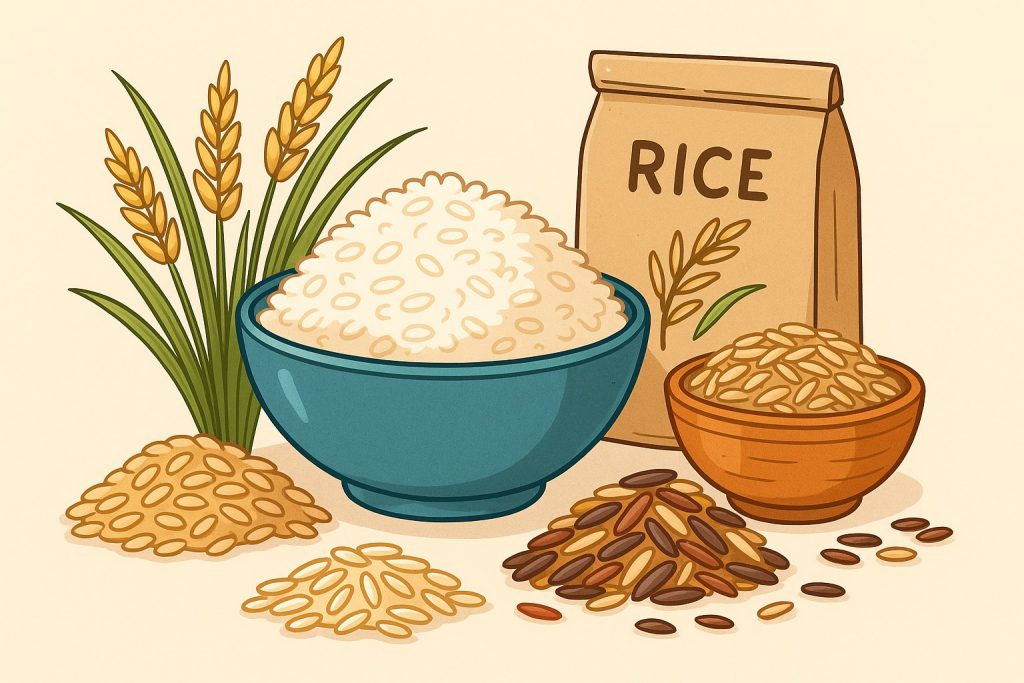Rice is one of the most widely consumed foods in the world, serving as a staple for over half the global population. From Asian stir-fries to Mediterranean pilafs and Latin American dishes, rice is a versatile, affordable, and nutritious grain that plays a central role in many cultures. But what exactly makes rice so popular, and which types offer the best health benefits?
The Global Importance of Rice
Rice has been cultivated for thousands of years, with its origins tracing back to China and India over 9,000 years ago. Today, it is grown on every continent except Antarctica and is the primary source of calories for billions of people. Its popularity is due to several factors:
- Adaptability to different climates and soils
- Long shelf life and ease of storage
- Neutral taste, making it compatible with countless dishes
- Cultural traditions and religious significance in many regions
Rice is more than just food—it’s a symbol of prosperity, family, and heritage across multiple civilizations.
Nutritional Benefits of Rice
Rice provides a number of health benefits, especially when you choose whole grain varieties. Although nutritional content can vary by type, rice generally offers:
- Complex carbohydrates for sustained energy
- Low fat and no cholesterol, making it heart-friendly
- A good source of B vitamins, such as niacin and thiamine
- Essential minerals like magnesium, phosphorus, and selenium
- In the case of brown and wild rice: fiber, which supports digestion
Rice is also naturally gluten-free, making it a safe and popular option for people with gluten intolerance or celiac disease.
Types of Rice and Which to Choose
There are over 40,000 varieties of rice, but most fall into a few common categories. Each has its own texture, flavor, and nutritional value.
1. White Rice
- Most common and widely consumed
- Milled and polished, which removes the bran and germ
- Long shelf life and quick to cook
- Lower in fiber and nutrients compared to whole grain options
2. Brown Rice
- A whole grain with bran and germ intact
- Higher in fiber, vitamins, and minerals
- Slower to cook but provides better satiety and blood sugar control
3. Wild Rice
- Technically a grass, not a true rice
- Rich in protein, antioxidants, and fiber
- Nutty flavor and chewy texture
4. Basmati and Jasmine Rice
- Aromatic long-grain varieties
- Lower in glycemic index (especially basmati), making them better for blood sugar
- Often used in Indian and Southeast Asian cuisine
For optimal nutrition, brown or wild rice are the best choices. However, for people with sensitive digestion or specific cooking needs, white rice can still be a suitable option when eaten in moderation.
Why Rice Is So Popular
Rice’s popularity is not just about nutrition. Its cultural significance, economic importance, and culinary flexibility make it irreplaceable in many parts of the world. It serves as:
- A foundation for meals, absorbing flavors and spices
- A ritual food, featured in weddings, harvests, and religious ceremonies
- A crop that supports millions of farmers worldwide
- A food that adapts to different incomes, diets, and preferences
Its ability to feed large populations affordably and sustainably ensures that rice will remain a cornerstone of the global diet for generations to come.
Glossary
- Bran — The outer layer of a grain, rich in fiber and nutrients.
- Germ — The nutrient-rich core of the grain, often removed in white rice.
- Whole grain — A grain that contains all three parts: bran, germ, and endosperm.
- Glycemic index — A measure of how quickly a food raises blood sugar.
- Satiety — The feeling of fullness after eating, which helps control appetite.


